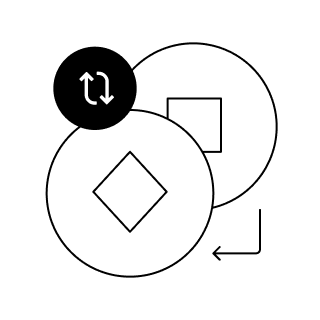What’s Treehouse (TREE)? How can I buy it?
What is Treehouse?
Treehouse (TH) appears to be a newer, niche crypto asset with limited coverage across major, reputable sources. As of the latest available information, there isn’t a widely recognized, canonical “Treehouse” token with established listings on top-tier exchanges (such as Coinbase, Binance, or Kraken), nor a formal whitepaper or audited documentation hosted by mainstream repositories (e.g., GitHub, GitBook) that are easy to verify. This creates an important starting point for readers: before engaging with any token using the name “Treehouse,” ensure you identify its precise contract address, confirm its chain (e.g., Ethereum, BNB Smart Chain, Solana), and validate its authenticity on reputable data aggregators (CoinGecko, CoinMarketCap) and block explorers (Etherscan, BscScan, Solscan).
In the broader crypto ecosystem, the “Treehouse” name is most prominently associated with Treehouse Finance, a well-known analytics company offering portfolio and DeFi risk tools. However, Treehouse Finance’s core products are analytics and risk management solutions; they are not broadly known for a native, widely traded token. If you encounter a “Treehouse” coin marketed as affiliated with Treehouse Finance, apply extra scrutiny and verify with official Treehouse Finance channels.
In short: Treehouse, as a coin, lacks sufficiently validated public data across top sources. If you are researching or considering interaction, prioritize contract-level verification, audits, and community transparency.
How does Treehouse work? The tech that powers it
Because verified, public, technical documentation for a “Treehouse” coin is scarce, it’s not possible to confidently describe its architecture, tokenomics, consensus assumptions, or smart contract design without risking misinformation. In general, when analyzing any token claiming to be a DeFi or Web3 protocol, you should review:
- Chain and standard: Which network (Ethereum, BNB Smart Chain, Solana, etc.) and which token standard (ERC-20, BEP-20, SPL) is used?
- Smart contract repository: Is there a verified contract on a block explorer? Is source code available? Is there a GitHub or GitBook?
- Audits and security: Has the token or protocol undergone third-party security audits (e.g., by CertiK, Trail of Bits, OpenZeppelin, Hacken)? Are audit reports public?
- Tokenomics: Supply cap, emission schedule, vesting, treasury allocation, and utility (governance, staking, fee discounts, collateral, etc.).
- Oracle and data dependencies: If it’s DeFi-related, does it use Chainlink or other oracles? How are price feeds handled?
- Governance: Is there on-chain or off-chain governance (Snapshot, Tally)? What is the voting power model?
- Composability: Integrations with DEXs, lending markets, yield optimizers, or cross-chain bridges.
- Compliance and admin controls: Are there upgradeable proxies, pause functions, blacklist mechanics, or admin keys? Who controls them?
Until those elements are publicly verified for a specific Treehouse token contract, treat any claimed “tech” at face value only after confirming provenance.
What makes Treehouse unique?
Given the lack of authoritative documentation for a Treehouse coin, claims of uniqueness are speculative. If a legitimate Treehouse token emerges, potential differentiators to investigate would include:
- Verifiable link to a recognized product or ecosystem partner.
- Clear, published token utility (beyond speculation), such as fee reductions, staking for data/API access, or governance over real parameters.
- Security posture: completed audits, bug bounties, time-locked admin keys, immutable code where appropriate.
- Transparent, credible team with consistent communication on official channels.
- Real integrations with respected DeFi platforms, or tangible use in analytics, risk management, or portfolio tooling.
Without those signals, uniqueness is marketing, not substance.
Treehouse price history and value: A comprehensive overview
Because there is no widely acknowledged “Treehouse” ticker with robust exchange listings and historical charts from major aggregators, a rigorous price-history overview is not feasible. If you locate a token claiming to be Treehouse:
- Verify the exact ticker and contract address on a reputable aggregator (CoinGecko/CoinMarketCap).
- Confirm centralized exchange or DEX pairs, liquidity depth, and slippage.
- Check historical data availability (candlesticks, volume, market cap, fully diluted valuation).
- Assess on-chain liquidity via block explorers and DEX analytics (DexTools, GeckoTerminal, DeFiLlama).
- Be cautious with thin-liquidity tokens; price history can be easily manipulated and may not reflect organic demand.
Is now a good time to invest in Treehouse?
This is difficult to answer responsibly without verifiable fundamentals and market data. Consider the following due diligence steps before any investment:
- Identity and authenticity: Confirm the project’s official website, social channels (X/Telegram/Discord), and that these link back to the exact contract address you intend to trade.
- Documentation and audits: Read the whitepaper or docs if available; look for recognizable auditors and public reports.
- Team and track record: Assess the team’s history, prior projects, and whether they engage publicly and transparently.
- Token utility and demand drivers: Identify clear use-cases that create sustainable demand for the token beyond speculation.
- Market structure: Evaluate liquidity, exchange listings, vesting cliffs, and concentration of token holdings (check top holders on the block explorer).
- Regulatory risk: Understand your jurisdiction’s rules and whether the token might trigger securities or compliance concerns.
- Personal risk management: Only allocate capital you can afford to lose; set position sizing, stop-loss or thesis invalidation points, and consider portfolio diversification.
Bottom line: Without credible, publicly verifiable information, treating any “Treehouse” coin as high risk is prudent. If authoritative sources later confirm a legitimate Treehouse token with audits, clear utility, and reputable listings, you can revisit the thesis with stronger evidence.
Discover the different ways to buy crypto
Create an OKX account
Get verified
Start a trade
Enter an amount
Choose your payment method
Confirm your order
All done
Create an OKX account
Get verified
Start a trade
If Treehouse isn’t available in the dropdown, purchase any of the available tokens and convert it to TREE.
Place a buy order
Complete your purchase
Receive your TREE
All done
Get the OKX app or Wallet extension
Set up your wallet
Fund your wallet
Find your next purchase
Note:
Tokens with the same symbol can exist on multiple networks or may be forged. Always double-check the contract address and blockchain to avoid interacting with the wrong tokens.
Trade your crypto on OKX DEX
Choose the token you’re paying with (e.g., USDT, ETH, or BNB), enter your desired trading amount, and adjust slippage if needed. Then, confirm and authorize the transaction in your OKX Wallet.
Limit order (optional):
If you’d prefer to set a specific price for your crypto, you can place a limit order in Swap mode.
Enter the limit price and trading amount, then place your order.
Receive your crypto
All done

Make informed decisions


How to get Treehouse for free
See what you can do with your crypto
How to buy Treehouse (TREE) FAQ
Disclaimer
You are viewing content that has been summarized by AI. Please be aware that the information provided may not be accurate, complete, or up-to-date. This information is not (i) investment advice or an investment recommendation, (ii) an offer, solicitation, or inducement to buy, sell or hold digital assets, or (iii) financial, accounting, legal or tax advice. Digital assets are subject to market volatility, involve a high degree of risk, and can lose value. You should carefully consider whether trading or holding digital assets is suitable for you in light of your financial condition and risk tolerance. Please consult your legal/tax/investment professional for questions about your specific circumstances.














